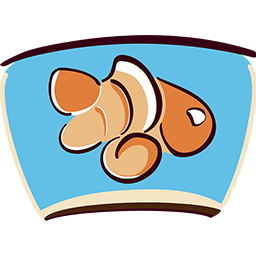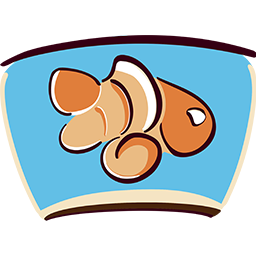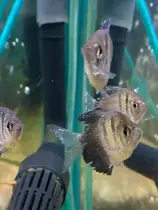Ich
Ichthyophthirius multifiliis (commonly known as Ich or Ick) is a very common parasite that affects both freshwater aquariums and ponds. Ichthyophthirius multifiliis is caused by the protozoan Ichthyopthirius which is commonly noted for leaving the fish that are infected with small white specks that appear to look like salt on their body and gills. If left untreated or by giving the wrong treatment to any fish that may have this disease, it can lead to the death of not only the infected fish but also any other inhabitants that share the same water.
Identification
Ich is very common in aquariums because the fish are stressed when transported from the breeder to the aquarium store and finally to your aquarium or pond setup. In reality, every fish will come into contact with this protozoan multiple times throughout its life, however, in most cases, the fish has a good immune system which allows it to fight off the protozoan before any infection occurs. The symptoms of Ich are very evident as there will be small white specks that appear to look like salt on their body, near and also inside of their gills. As the disease progresses the fish might start to try to rub against decorations, the substrate, and an aquarium or pond equipment that is inside the fish's location. This disease can cause the fish to become lethargic, breathe heavily and rapidly (when swimming or near the top of the water's surface), and lastly, it can cause death.
Pathology
To understand how to treat Ich completely, we must first understand how Ich lives and reproduces. For this to make better sense, we'll start when the ich protozoan attaches itself to be fish's skin and starts to cause some irritation. The fish will start to react by trying to block off the protozoan from getting into its bloodstream where it would do more damage, therefore protecting itself and its vital organs. The Ich protozoan will then start to build a cyst on the fish's skin feeding and growing bigger and bigger, in this stage the protozoan is now called a trophozoite. The trophozoite will later mature enough to turn into a trophont, where it will burst through the cyst wall and be carried by the aquarium's water column. This releases multiple tomites, which is where the ich is reliant on the temperature for the tomites to develop so that they can be released into the water column where they will repeat this process over and over.
In colder temperatures it can take anywhere from days to weeks for the tomites to be released into the water column, however, the warm temperature will speed this process up anywhere from days to hours. The stage in which Ich cannot be treated is when it has already formed a cyst wall on the fish's tissue, as no medicine can penetrate the cyst making the trophozoite unharmed and still able to develop and grow. However, there is a stage in which Ich is the weakest and where it can be killed very easily. When the tomites are released into the water column, they are very weak and known to only live up to a day without a living host. They can attach themselves however to plants, filter media, decorations, or even components such as heaters, filter intakes and outputs, the walls of the tank, and more. Since they can attach themselves to almost anything within an infected setup it is recommended to never remove, add, or change any components or inhabitants within the setup until the treatment is finished and fish show no signs of Ich.
Treatment and Medication
Since we now understand the life cycle of Ich, we can see that our treatment has some guidelines that it must follow to kill Ich at its weakest point. This is why various treatments should make more sense, and why many suggest raising the temperature to help speed up the life cycle of Ich to kill it. As we cannot kill Ich while it is on the fish, we need to remember that removing any fish during this period (if showing signs of being infected or not) can lead to the new tank becoming infected with Ich as well.
One of the most recommended methods of killing Ich for mild cases is to raise the temperature to 86oF (30oC) over a few days to not shock any inhabitants. Temperature manipulation was shown to be effective in killing Ich at its tomatoes stage, from a university study done by Ruth Francis-Floyd, IFAS Extension veterinarian, Department of Large Animal Clinical Sciences, and Peggy Reed, biological scientist, Department of Large Animal Clinical Sciences and Department of Fisheries and Aquatic Sciences. The reason that heat has shown to be effective, is because the tomites cannot withstand a 15oF degree temperature difference from their source to being inside of your tank. By leaving the temperature this high, we are speeding up the life cycle of Ich while also killing off any tomites that have been released or are attached to components in the water as Ich is extremely temperature dependent for their lifecycle. Once two weeks have passed at this temperature, slowly decrease the temperature over a few days back to the normal levels. If you notice any fish breathing heavily (or at the surface of the water), add in extra surface aeration methods such as an airstone with an air pump, or if you have a filter try to lower the water level so that it creates extra water movement.
While using the heat method, adding in some aquarium salt can work by causing the tomites to die off in their free-swimming stage, although adding in salt has been noted to be ineffective and may only be a secondary help against the primary treatment.
Another method that is highly recommended for mild or severe cases when treating Ich is to use formalin, malachite green, or a mixture of both of them combined. When using any medicine, it is recommended to remove any carbon from the filter media and turn off any UV sterilizers or protein skimmers during usage. We recommend following the product's instructions on the bottle when using either of these products.
Please note that using malachite green may be due to some decorations in your aquarium being slightly green (this can be cleaned or rubbed off after the water has been changed and the Ich has been fully cured).


